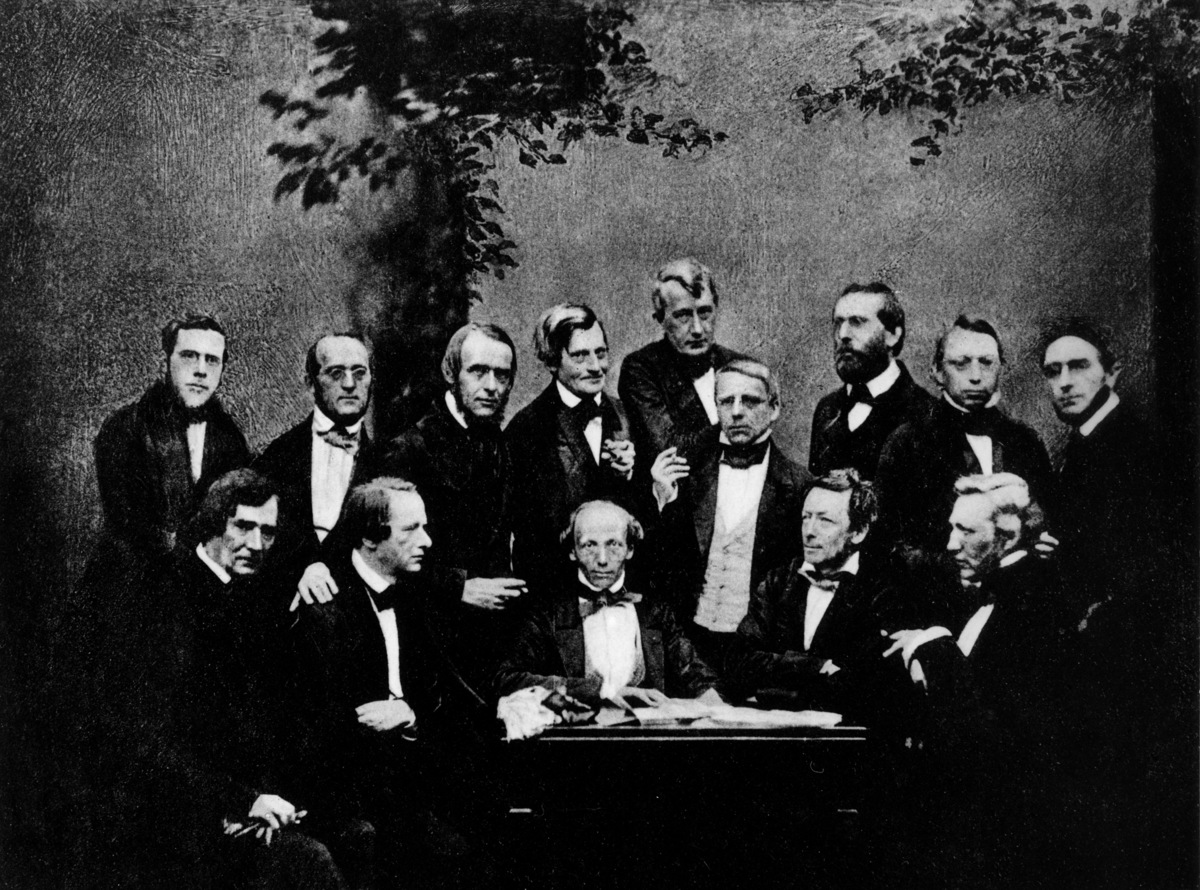Abstract
In the nineteenth century, German universities a gained worldwide reputation as first-rate centers of learning. Founded in 1527, Philipps University in Marburg was known first and foremost for attracting numerous representatives of literary romanticism—Achim von Arnim (1781–1831), Clemens Brentano (1778–1842), and Jacob and Wilhelm Grimm all studied there. The Grimm brothers first went to Marburg to study with the famous law historian Friedrich Karl von Savigny (1779–1861); later, they turned to linguistics and founded the discipline of Germanistik, the study of German language and literature. The daguerreotype reproduced below is a group portrait of fourteen Marburg professors from the year 1856. The group includes Eduard Zeller (seated in the middle), Hermann Kolbe (standing, second from the left), Heinrich von Sybel (standing, third from the left) and Bruno Hildebrand (standing, third from the right). After Hesse was annexed to Prussia in 1866, Philipps University was renamed Royal Prussian University, a move that further enhanced its prestige and dramatically increased its student and faculty numbers. Chemist Robert Wilhelm Bunsen, surgeon Ferdinand Sauerbruch, philosopher Martin Heidegger, and political theorist Hannah Arendt are among the many renowned scholars who either studied or taught at Marburg. Daguerreotype: unknown photographer, 1856.
